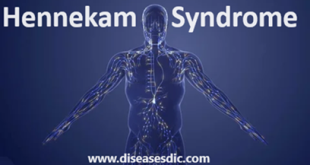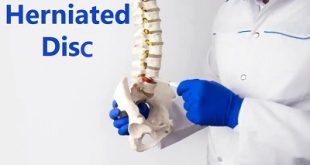Definition
Hemochromatosis is an iron disorder in which the body simply loads too much iron. This action is genetic and the excess iron, if left untreated, can damage joints, organs, and eventually be fatal.
Types of hemochromatosis
Hereditary hemochromatosis isn’t the only type of hemochromatosis. Other types include:
Juvenile hemochromatosis: This causes the same problems in young people that hereditary hemochromatosis causes in adults. But iron accumulation begins much earlier, and symptoms usually appear between the ages of 15 and 30. This disorder is caused by mutations in the hemojuvelin or hepcidin genes.
Neonatal hemochromatosis: In this severe disorder, iron builds up rapidly in the liver of the developing fetus. It is thought to be an autoimmune disease, in which the body attacks itself.
Secondary hemochromatosis: This form of the disease is not inherited and is often referred to as iron overload. People with certain types of anemia or chronic liver disease may need multiple blood transfusions, which can lead to excess iron accumulation.
History
The disease was first described in 1865 by Armand Trousseau in a report on diabetes in patients presenting with a bronze pigmentation of their skin. Trousseau did not associate diabetes with iron accumulation; the recognition that infiltration of the pancreas with iron might disrupt endocrine function resulting in diabetes was made by Friedrich Daniel von Recklinghausen in 1890.
Epidemiology
Hemochromatosis is the most common genetic disease in North America. Patients typically have northern European ancestry. There is a strong connection to Celtic populations, but it is important to recognize that the Celtic empire included countries such as northern Portugal and extended into Turkey. The European countries with the highest prevalence include Ireland, France, and Denmark. It has been speculated that the first people with hemochromatosis originated in 4000 B.C. in central Europe. Mitochondrial DNA analysis has not shown a linkage to an ancestral African origin. The genes for hemochromatosis likely came to North America with the Vikings and other explorers from the United Kingdom, France, and Portugal. It has been speculated that during the Irish potato famine and the bubonic plague throughout Europe that iron-loaded patients may have had a biological advantage and increased survival. Hemochromatosis patients without cirrhosis have an excellent survival and fertility, so the prevalence remains high throughout Caucasian populations. Migration of European immigrants to North America, Australia, and South Africa has led to large populations of hemochromatosis within these areas.
Symptoms of hemochromatosis
Some people with hereditary hemochromatosis never have symptoms. Early signs and symptoms often overlap with those of other common conditions. Common symptoms include:
- Joint pain
- Abdominal pain
- Fatigue
- Weakness
Later signs and symptoms of the disease may include:
- Diabetes
- Loss of sex drive
- Impotence
- Heart failure
- Liver failure
Causes of hemochromatosis
Hereditary hemochromatosis is caused by a mutation in a gene that controls the amount of iron your body absorbs from the food you eat. These mutations are passed from parents to children. This type of hemochromatosis is by far the most common type.
Gene mutations that cause hemochromatosis: A gene called HFE is most often the cause of hereditary hemochromatosis. You inherit one HFE gene from each of your parents. The HFE gene has two common mutations, C282Y and H63D. Genetic testing can reveal whether you have these mutations in your HFE gene.
Risk factors of hemochromatosis
Having two copies of a mutated HFE gene: This is the greatest risk factor for hereditary hemochromatosis.
Ethnicity: People of Northern European descent are more prone to hereditary hemochromatosis than are people of other ethnic backgrounds. Hemochromatosis is less common in African-Americans, Hispanics and Asian-Americans.
Your sex: Men are more likely than women to develop signs and symptoms of hemochromatosis at an earlier age. Because women lose iron through menstruation and pregnancy, they tend to store less of the mineral than men do. After menopause or a hysterectomy, the risk for women increases.
Family history: If you have a first-degree relative a parent or sibling with hemochromatosis, you’re more likely to develop the disease.
Treatment and medications
· It is very important to get iron levels down to normal. Therapeutic blood removal, or phlebotomy, is the most common means of iron reduction. Therapeutic phlebotomy (TP) is the same as regular blood donation but TP requires a doctor’s order (prescription).
· Once iron levels reach normal, a person can begin maintenance therapy, which involves making a blood donation every 2 to 4 months for life. Some people may need to give blood more or less depending on what they eat and how quickly their body absorbs iron.
· The transferrin-iron saturation percentage (TS%) and serum ferritin tests can be done periodically to help determine how often blood should be removed.
Diagnosis and tests
There are 3 tests that together make up the Iron Panel Test. These tests look at serum ferritin, Total iron binding capacity, and serum iron. These tests need to be taken as a panel, not independently, to receive a comprehensive and accurate assessment of a potential Hemochromatosis diagnosis.
Serum Iron (SI): This test is best conducted after fasting for at least three hours. Also, iron or vitamin C supplements should be discontinued at least three days before taking the test. Do not discontinue other medication unless your doctor tells you to.
Serum Ferritin (SF): This test measures the amount of iron contained or stored in the body. Serum ferritin reference ranges are different for adults and children. For adults, the ideal range is 50-150 ng/ml.
Total Iron Binding Capacity (TIBC): This test tells how well your body can bind to iron. Serum iron divided by TIBC x 100% gives you important information about the transferrin-iron saturation percentage (TS%). TS% is usually 25-35%; in some people with iron overload, the TS% is very high. There are other types of iron overload where the TS% is normal.
In the past, liver biopsy was widely used to diagnose hemochromatosis. Today, liver biopsy is not necessary to diagnose the inherited form of HHC. DNA tests are available to determine if a person has genetic hemochromatosis.
Prevention of hemochromatosis
- You can’t prevent primary, or inherited, hemochromatosis. However, not everyone who inherits hemochromatosis genes develops symptoms or complications of the disease. In those who do, treatments can keep the disease from getting worse.
- Reduce your consumption of red meat (such as beef and lamb) and avoid organ meat (such as liver, kidney and heart) – iron is much more readily absorbed from meat than from vegetables, cereals and beans
- Avoid taking iron supplements and eating foods fortified with iron, such as breakfast cereals
- Reduce the amount of vitamin C you consume, as this increases the absorption of iron and helps it to be deposited in some organs
- Avoid drinking too much alcohol, especially with meals, as this can increase iron absorption and cause liver disease
- Consume tea and dairy products with a meal to reduce the amount of iron absorbed
 Diseases Treatments Dictionary This is complete solution to read all diseases treatments Which covers Prevention, Causes, Symptoms, Medical Terms, Drugs, Prescription, Natural Remedies with cures and Treatments. Most of the common diseases were listed in names, split with categories.
Diseases Treatments Dictionary This is complete solution to read all diseases treatments Which covers Prevention, Causes, Symptoms, Medical Terms, Drugs, Prescription, Natural Remedies with cures and Treatments. Most of the common diseases were listed in names, split with categories.







